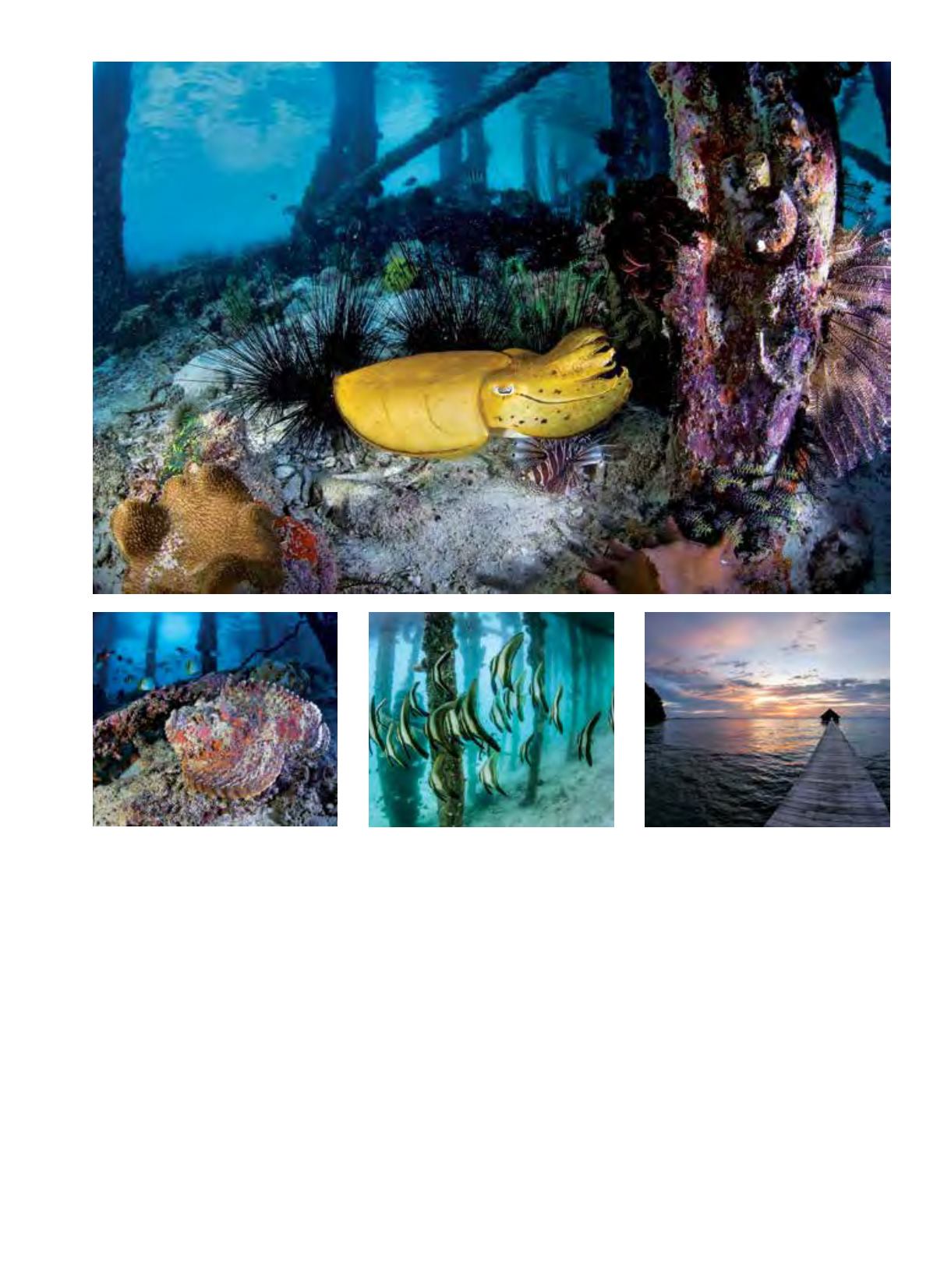
|
39
piece of bark, might crawl stealthily across bottom
debris. Piers throughout the western Pacific are also
magnets for juvenile cuttlefish that regularly drift
through the scenery, alternately feeding and hiding.
You may see a cuttlefish imitate a mangrove leaf, an
algae-covered rock or any number of underwater
objects, using its nervous system to control its millions
of specialized cells to manipulate its color and texture
as it searches for crustaceans or fish.
Divers on their first exploration of these man-made
structures may not immediately recognize the annual
cycles of succession that continually change the
makeup of these mini-ecosystems. However, diving
a dock many times can reveal a proliferation of some
previously unnoted species due to environmental
disturbance, lunar periodicity or an influx of new
larvae. While the species living under the structure
change over time due to immigration, competition
and local extinction, the overall number of species
generally stays the same if the area is left undisturbed.
These dynamic ecosystems recall the theory of
equilibrium in island biogeography.
By tearing away their gazes momentarily from the life
on the critter-laden bottom and looking upward, divers
can discover an entirely different view. The complex
embroidery of attached organisms on the vertical
pilings or clinging to the bottom of floats often include
a menagerie of barnacles, colorful but toxic sponges,
tube-dwelling polychaetes, coralline algae, hydroids and
delicate tunicates, in addition to a host of vertebrates.
A silver river of hundreds of scad or other baitfish
may slip sinuously among the forest of pier pilings.
Visual predators such as the bluefin or giant trevally,
which usually circle piers from a distance, watching
Clockwise from the top: Mimicking a decomposing
mangrove leaf, a juvenile cuttlefish hovers just
above the bottom. Every pier or dock is different
according to its location, size, depth, etc. Slipping
through tall pilings, a school of young longfin
spadefish seeks protection from predators under a
pier. Reef stonefish are true masters of disguise,
and they seem to habitually make their homes in
the shadows of docks or piers.


